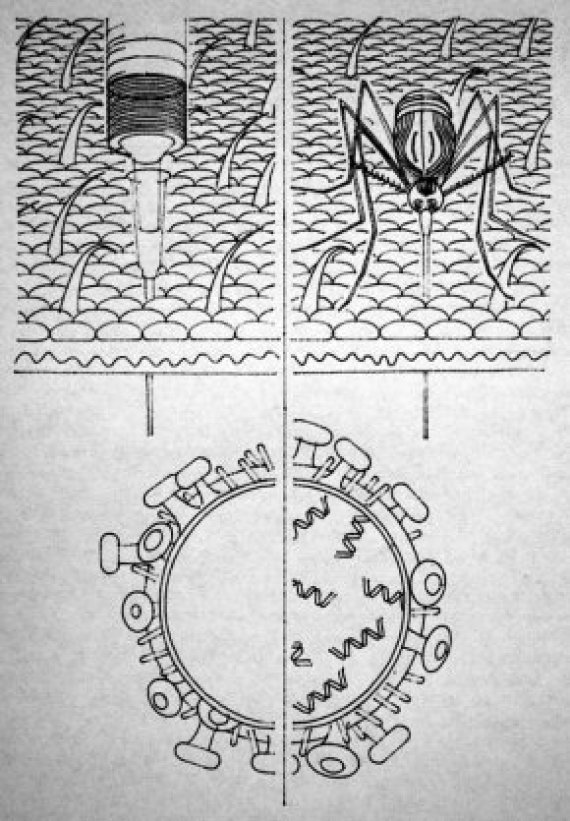The chikungunya virus may not be deadly but the disease it causes can be pretty miserable for the patient, leading to with painful joints reminiscent of arthritis, for instance, and fever. The virus, which is spread by mosquitos, was discovered 60 years ago in Tanzania but in recent years there have been outbreaks in Asia and it has also been reported in Southern Europe. It took PhD student Stefan Metz only four years to develop a vaccine for the disease. Usually a live but weakened virus is used for this, but that method is costly and not without risks. Therefore Metz developed a new vaccine on the basis of virus-like particles (VLPs). ‘An individual virus consists of a packet of proteins with DNA or RNA at the centre,’ he explains. ‘The genetic material enables the reproduction of the virus while the proteins on the outside are recognized by our body and trigger the immune response. A VLP consists of the protein structure without the genetic material. It is recognizes as a chikungunya virus but is unable to reproduce and therefore functions as a vaccine.’ The elegant VLPs are already being used to fight other diseases, such as in the vaccines for cervical cancer and ‘flu. Tests of the chikungunya vaccine on mice showed that this vaccine offered complete protection from the virus. But years of expensive clinical trials are needed before the vaccine can be approved for use. Virology has now got follow-up funding for this. Metz will defend his thesis on 24 June. After that, he will be working as a postdoc at the University of Amsterdam on the HIV virus.
Vaccine hoodwinks immune system
Chikungunya virus has spread as far as Southern Europe.Doctoral student develops vac-cine using virus-like particles.

